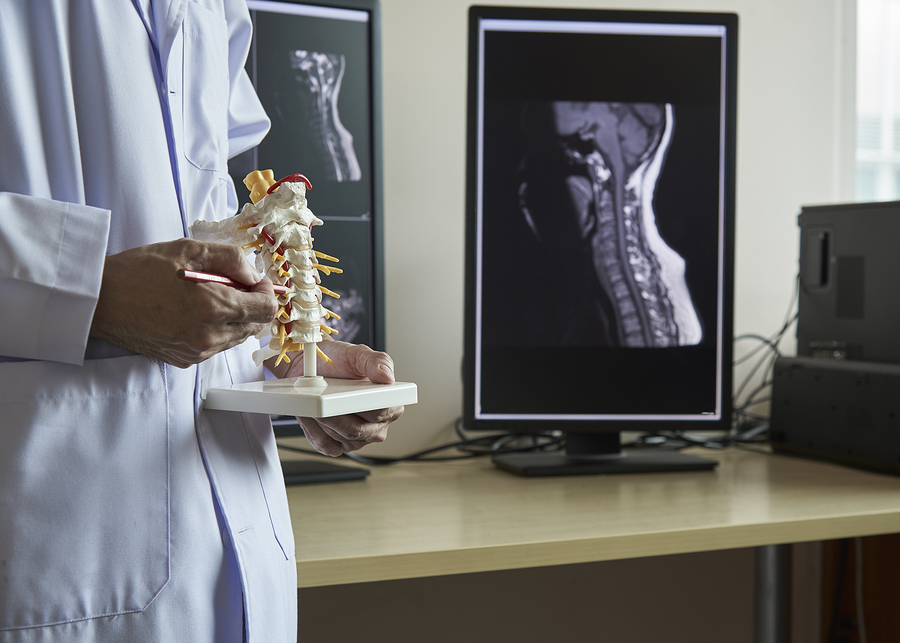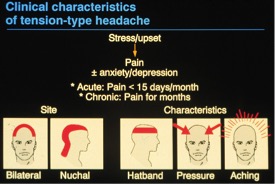Barton Services
Posture is Life: Influencing Longevity through Postural Correction
The Posture Connection
Posture has become one of the most overlooked aspects of good health and longevity. Research has shown a clear and direct connection between poor posture and diminished quality and longevity of human life. Spinal pain, headache, mood, blood pressure, pulse and lung capacity are among the functions most easily influenced by posture.

“You are only as young as your spine.”
-Jack LaLanne, DC
As the head moves forward all measures of health status are significantly reduced.
Rene Cailliet, Director of the Department of Physical Medicine and Rehabilitation, University of Southern California, concluded that forward head posture can add up to thirty pounds of abnormal leverage on the spine, and can reduce lung capacity by as much as 30%, which can lead to heart and blood vascular disease. He determined a relationship between forward head posture and the digestive system, as well as endorphin production affecting pain and the experience of pain.
According to Kapandji, Physiology of the Joints, Volume III: For every inch that the head moves forward in posture, it increases the weight of the head on the neck by 10 pounds. For example, a forward posture of 3 inches increases the weight of the head on the neck by 30 pounds and the pressure put on the muscles increases 6 times.
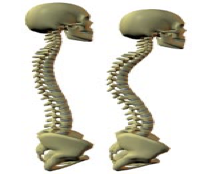
The British Regional Heart Study
As a part of the British Regional Heart Study, scientists found that men who lost 3cm in height were 64% more likely to die of a heart attack than those who lost less than 1cm and that over the 20-year period of the study, men lost an average of 1.67cm. That height loss was associated with a 42% increased risk of heart attacks, even in men who had no history of cardiovascular disease.

Our Posture = Our Emotional State
We can tell a lot about a person from the way they carry themselves. For instance, picture the way someone stands when they are feeling depressed: mid-back and shoulders rolled forward, head hanging, gaze focused on the ground. Not exactly the picture of health.
Yoga gurus have long said that it is impossible to be depressed with your armpits open.
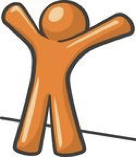
Posture and Life Expectancy
A group of scientists led by Dr. Deborah M. Kado wanted to see if there was any correlation between postural distortion and a person’s health. They started with the biggest health problem: death. They asked: “Was there any correlation between a person having a hyperkyphosis and having a decreased life expectancy?”
The Frightening Long-Term Effects
Dr. Kado reported in the Journal of the American Geriatrics Society that persons with hyperkyphosis (hunched over – head and shoulders rolled forward) were two times more likely to die from pulmonary causes. They were also 2.4 times more likely to die from cardiovascular disease than those without poor posture
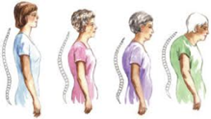
Too Much Sitting Can Shorten Your Life
According to a study from the American Cancer Society, the amount of time you spend sitting can affect your risk of death. Prolonged periods of sitting have a negative influence on key metabolic factors like triglycerides, high-density lipoprotein, cholesterol, and a number of other biomarkers of obesity and other chronic diseases.

To live a long, active, energetic life, few things matter more than posture.

This quote by Thomas Meyers, Author of Anatomy Trains, says it all… “Movement becomes a habit, which becomes posture, which becomes structure.”

Postural Assessment is Key
Postural assessment and correction is the key in the majority of non-traumatic neck pain. It’s not uncommon to observe 2″ of anterior head placement in new patients. Would you be surprised that your neck and shoulders hurt if you had a 12 pound bowling ball hanging around your neck?

Headaches
Are Headaches Normal?
Many people believe that it is okay to have headaches. Some even think that headaches are normal. This can be a dangerous misconception as headaches can be an important warning sign that something else may be wrong.
According to a study by the Mayo Clinic, headaches are the 9th most common reason patients see a doctor. The World Health Organization estimates that 50-75% of adults have had a headache in the last year and 30% or more have reported a migraine. In the Global Burden of Disease Study, updated in 2013, headache disorders were the 3rd highest cause of years lost due to disability.
Many people who regularly have headaches reach for medication to relieve the pain. They often develop dependencies on these medications, which have harmful side effects over time such as stomach, liver or kidney problems.
- Relying upon pain numbing medications on a regular basis for headaches is not justified if you know about the latest research and treatments that are available to you. Over 70% of patients who use alternative therapies never informed their medical providers that they used such therapies? Over 70% of patients who use alternative therapies never informed their medical providers that they used such therapies?
Common headache types include: Migraine, Tension Type, Cervicogenic
Migraine: Contrary to popular belief, migraine is not just a bad headache. It’s an extremely incapacitating collection of neurological symptoms that usually includes a severe throbbing recurring pain on one side of the head. It’s often accompanied by nausea, vomiting and extreme sensitivity to light and sound.
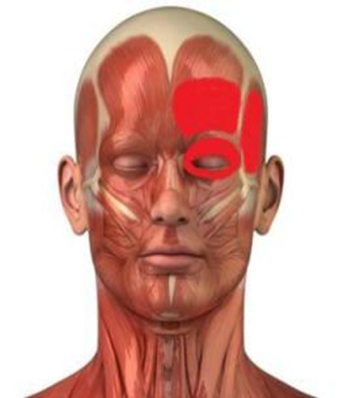
What Happens During a Migraine?
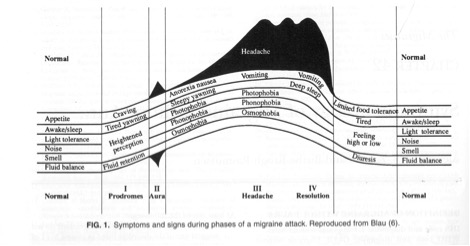
22% of the participants reported more than a 90% reduction of their migraines.
50% more participants reported significant improvement in the intensity of the migraines.
After one week of treatment 75% of the subjects reported complete relief of headache.They also noted a significant increase in cervical ROM and a reduction of dizziness.
“Spinal manipulation was as effective as a well established and efficacious treatment (amitriptyline), and on the basis of a benign side effects profile, it should be considered a treatment option for patients with frequent migraine headaches.
Tension-type headaches are the most common form of headache, occurring in about three-quarters of the general population. Tension-type headache is usually described as a pain that feels like a tight band round your head or a weight on top of it. Your neck or shoulder muscles may also hurt along with the headache.
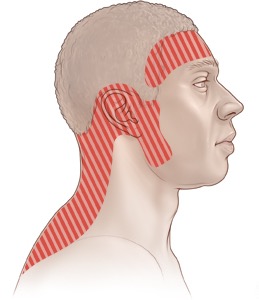
TENSION TYPE HEADACHES
- Female:Male – 60:40
- Lateralization – diffuse bilateral
- Location – diffuse
- Frequency – 1-30 per month
- Severity – mild/moderate
- Duration – days to weeks
- Pain Character – dull
- Triggers – multiple, neck movement not typical
- Associated Symptoms – occasionally decreased appetite, phonophobia or photophobia
Spinal manipulation is an effective treatment for Tension Headaches. Amitriptyline was slightly more effective in reducing pain at the end of the treatment period but was associated with more side effects.
In addition…Four weeks after the cessation of treatment, the patients who received spinal manipulative therapy (SMT) experienced a sustained therapeutic benefit in all major outcomes in contrast to patients that received amitriptyline, who reverted to baseline values. And the sustained therapeutic benefit with SMT seemed to result in a decreased need for over the counter medication.
Almost without exception, chiropractic manipulation of the neck was found to be superior in terms of reducing tension headache frequency, intensity, and improving functional status of patients when compared to other standard medical treatments.
CERVICOGENIC HEADACHES
A cervicogenic headache starts in the cervical spine—your neck. Sometimes these headaches mimic migraine headache symptoms. Initially, pain may begin intermittently, spread to one side of the head, and become almost continuous. Pain can be exacerbated by neck movement or a particular neck position (e.g., eyes focused on a computer monitor).
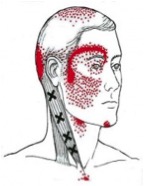
- Lateralization – unilateral without sideshift
- Location – occipital to frontoparietal and orbital
- Frequency – chronic, episodic
- Severity – chronic, episodic
- Duration – 1 hour to weeks
- Pain Character – non-throbbing, and non-lancinating pain, usually starts in neck
- Triggers – neck movement and posture, limited ROM, pressure over C0-C3
- Associated Symptoms – usually absent or similar to migraine but milder, decreased ROM
110 participants with cervicogenic headache were randomized to receive both cervical and thoracic spinal manipulation, or combined mobilization and exercise. The findings indicated that manipulation was more effective at reducing headache intensity and disability. Additionally, the manipulation group experienced significantly reduced duration and frequency of headaches.
Evidence suggests that chiropractic care, including spinal manipulation, improves migraine and cervicogenic headaches.
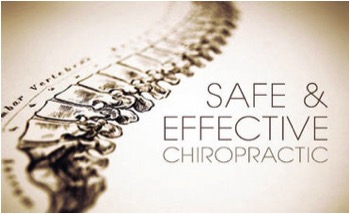
HEADACHES AT A GLANCE

Spinal manipulation has been proven effective for many types of headaches and it does not involve medication to cover up the pain. Doctors of chiropractic are well educated in this field and can also diagnose the condition to recommend the most effective treatment, which typically includes exercise and nutrition.
HEALTHY ERGONOMICS
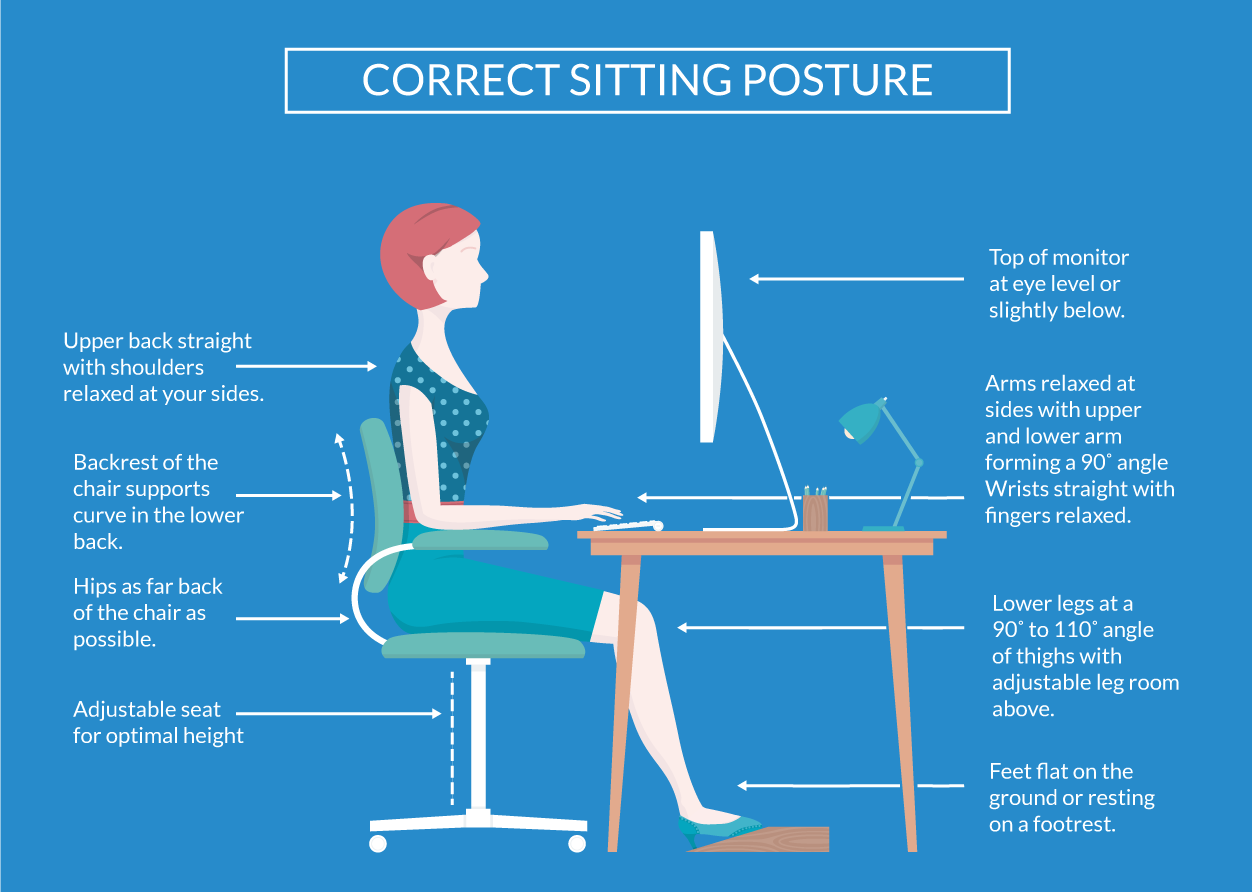
If you have headaches, be sure to check with a health professional for a thorough evaluation.
The best approach is to not develop the problem in the first place.
Take preventive steps:
- Maintain proper body weight
- Exercise regularly
- Each nutritious food
- Reduce stress
- Practice healthy ergonomics
- Maintain proper posture and spinal function
ion
Neck Pain
The most common causes of neck pain include:
- Stress
- Prolonged postures
- Minor injuries and falls
- Referred pain
- Over-use
- Whiplash
- Herniated disc
- Pinched nerve
Are you getting more headaches than you used to? Are you having neck cramps or back pain and can’t figure out why? The culprit could be your large, heavy purse. Trendy handbags and purses keep getting bigger and bigger – and you are filling them to the max.
Toting these bags around with us all day – which can easily weigh 15 pounds or more – can also lead to upper back problems. And since you might not notice the pain until later, when you’re working out or sitting at your desk at the office, the source of the pain often remains a mystery as the problem gets worse and worse.
The American Chiropractic Association recommends that handbags weigh no more than 10 percent of the owner’s body weight, but doctors point out that the rule was made assuming the weight would carried distributed evenly across your back, like when wearing a backpack.
Handbags that will be carried with the straps over only one shoulder should generally weigh less than 10 percent of your body weight to avoid injury. Also remember to switch the side you’re carrying it on often, and walk with correct posture, keeping your head and shoulders aligned and upright.
Leg Pain
The sciatic nerve is the largest nerve in the human body and one of the most common causes of leg pain. The term sciatica is used to describe the symptoms of pain occurring in the leg and lower back. Some use the term specifically to mean a nerve dysfunction caused by compression of one or more lumbar or sacral nerve roots from a spinal disc herniation.
When the liquid center of a disc bulges outwards, herniation occurs. The bulged disc can then tear against external ring fibers, contact the spinal canal, and compress a nerve root against the lamina or pedicle of a vertebra. This causes sciatica. The liquid extruded when this happens can cause inflammation and swelling of the surrounding tissue which can further compress the nerve root into the confined space of the spinal canal.
Sciatic pain typically runs through the lower back and down the sciatic nerve through the leg and can even run all the way down to the foot. Numbness, tingling, burning, and pricking sensations are all symptoms that may occur in cases of sciatic injury.
Sciatica is caused by compression of lumbar nerves, sacral nerves, and/or the sciatic nerve. Sciatic damage can be permanent, thus it is important that you seek medical attention if you are suffering from these symptoms.
Ice Therapy
The application of ice is an excellent way to reduce inflammation and temporary pain. Ice causes constriction in the veins of the affected tissue, limiting blood flow and acting as an anesthetic. Once the ice is removed, blood will rush back to the affected area providing nutrients that will help with the healing process.
 Ice therapy is often used in the treatment of back and neck pain. It lessens the severity of muscle spasms, reduces pain by causing numbness, and aids in lessening soft tissue damage.
Ice therapy is often used in the treatment of back and neck pain. It lessens the severity of muscle spasms, reduces pain by causing numbness, and aids in lessening soft tissue damage.
Ice or ice packs should be wrapped in a towel while being used for treatment. Ice therapy should be used on the affected area for 24 to 48 hours from the initial ache or injury. It is recommended to reapply it every 10 minutes for maximum affect and to not leave it on for more than 20 minutes at a time.
Patients suffering from rheumatoid arthritis, Raynaud’s Syndrome, colds or allergic conditions, paralysis, or areas of impaired sensation should not use ice therapy.
Heat Therapy
Most commonly used for rehabilitation purposes, heat therapy is the application of heat to the body for pain relief and health. It can be performed using something as simple as a heat to cloth to as advanced as ultrasound.
The therapeutic effects of heat include increasing the extensibility of collagen tissues; decreasing joint stiffness; reducing pain; relieving muscle spasms; reducing inflammation, edema, and aids in the post acute phase of healing; and increasing blood flow. The increased blood flow to the affected area provides proteins, nutrients, and oxygen for better healing.
Heat creates higher tissue temperatures, which produces vasodilation that increases the supply of oxygen, and nutrients and the elimination of carbon dioxide and metabolic waste. It is useful for muscle spasms, myalgia, fibromyalgia, contracture, and bursitis.Heat therapy can also be used for the treatment of headaches and migraines.
Heat therapy is only part of the therapeutic procedure that is chiropractic, and rarely provides a full extent of recovery without it.
Heat therapy should not be used on swollen or bruised tissues. It is advised that patients who have dermatitis, deep vein thrombosis, diabetes, peripheral vascular disease, open wounds, and cardiovascular conditions such as hypertension not use heat therapy.
Adjustments
Chiropractic adjustment can only be applied to joints in the spine and correction of misalignment or subluxation that may occur in that area. 95 percent of all spinal adjustments in the world are performed by chiropractors. Chiropractic adjustment frees the vertebrae to adjust to its natural position. The natural state of the body knows how to correct itself once it is free to do so with the help of chiropractic adjustment.
Chiropractic adjustments can help prevent and treat many conditions such as the following:
- Arthritis
- Bursitis
- Carpal tunnel syndrome and other repetitive strain disorders
- Chronic muscle pain and stiffness
- Headaches
- Most musculoskeletal and sports-related injuries
- Nerve disorders
- Pain and stiffness in the back, chest, abdomen, neck, hips and shoulders, as well as extremities, such as arms, legs, and feet
- Sciatica pain
- Scoliosis
- Tendonitis
- Whiplash and other traumatic injuries
Some common adjustment methods include:
- Toggle Drop: This is when the chiropractor, using crossed hands, presses down firmly on a particular area of the spine. Then, with a quick and precise thrust, the chiropractor adjusts the spine. This is done to improve mobility in the vertebral joints.
- Lumbar Roll (aka side posture): The chiropractor positions the patient on his or her side, then applies a quick and precise manipulative thrust to the misaligned vertebra, returning it to its proper position.
- Release Work: The chiropractor applies gentle pressure using his or her fingertips to separate the vertebrae.
- Table adjustments: The patient lies on a special table with sections that drop down. The chiropractor applies a quick thrust at the same time the section drops. The dropping of the table allows for a lighter adjustment without the twisting positions that can accompany other techniques.
- Instrument adjustments: Often the gentlest methods of adjusting the spine. The patient lies on the table face down while the chiropractor uses a spring-loaded activator instrument to perform the adjustment. This technique is often used to perform adjustments on animals as well.
- Manipulation under anesthesia (MUA): This is performed by a chiropractor certified in this technique in a hospital outpatient setting when the patient is unresponsive to traditional adjustments.Chiropractors take many factors—including size, weight, and muscle structure—into consideration when deciding on which adjustment to make. Sometimes, ice, electrical stimulation, or massage therapy (including traction massage) are used prior to a spinal manipulation in order to relax the muscles.
Patients with chronic pain my require anesthesia during their treatment. This procedure is safe and only reserved for patients with special circumstance. Chiropractic adjustments, when performed by a skillful professional, are significantly safe methods of spinal correction.
Craniosacral therapy (CST) is a form of bodywork that is focused primarily on the concept of primary respiration and regulating the flow of cerebrospinal fluid by using therapeutic touch to manipulate the synarthrodial joints of the cranium. This procedure is proven to often relieve symptoms of stress and tension.
The following are observed benefits from chiropractic adjustments:
- Increased blood flow
- Increased body secretion of melatonin and endorphins
- Increased pain tolerance levels
- Increased range of motion
- Reduced blood pressure
- Reduced tension
- Reduced muscle pain
Popping sounds heard during a chiropractic adjustments are usually caused by pockets of air being released from behind the joints. Mild aching or soreness may be present after a chiropractic visit, but is typically gone shortly after and easily relieved with the application of ice or heat.
Back Pain
While lower back injuries are the most common, pain in the thoracic pain (middle of the spine) and cervical pain (neck region) of the spinal cord also often occurs. These injuries affect the vertebrae, discs, soft tissues, muscles, and joints of your body. Other parts of your entire body can be affected due to these injuries.
Muscle strain often contributes to lower back pain. The erector spinae, which help keep the spine erect, can become enflamed and spasm. Discs that are not in their proper place due to malformation can cause damage to surrounding discs, joints, nerves, muscles, ligaments, and tendons.
Herniated or degenerative discs are often a cause for upper back pain. Typically rest, ice/heat packs, over-the-counter inflammatory medicine, and pain medicine such as aspirin treat back pain until the muscles are able to return to their lower positions. However, if pain persists after more than a couple weeks, the back may begin to atrophy and become significantly weak. This can leave you open to further injury.
Most cases of back pain are mechanical, meaning they are typically not caused by any serious conditions.
Back pain is experienced by 31 million Americans at any given time and the single leading cause of disability worldwide. According to the US Department of Labor, workers in the health care industry sustain back injury more than any other profession. The number one reported injury in health care is patient handling. 40 to 50 percent of nurses sustain back injury. Workplace injuries cost a total of nearly $50,000 per injury on average for medical treatment and indemnity cost.

